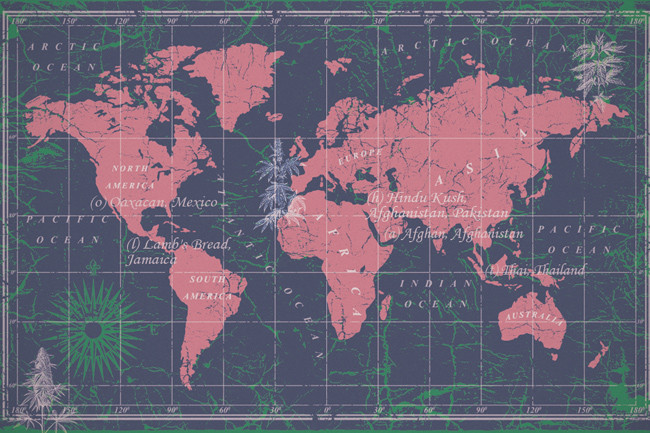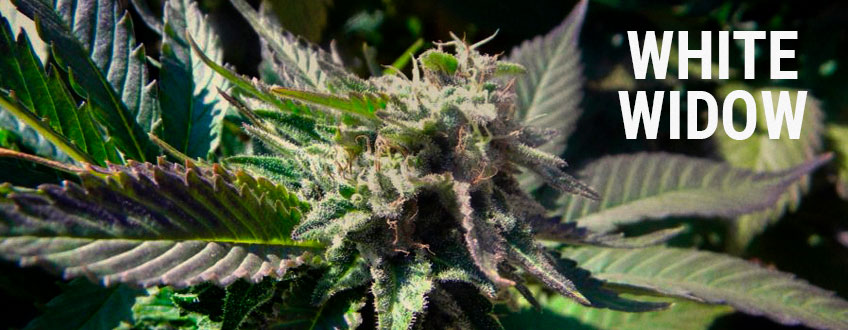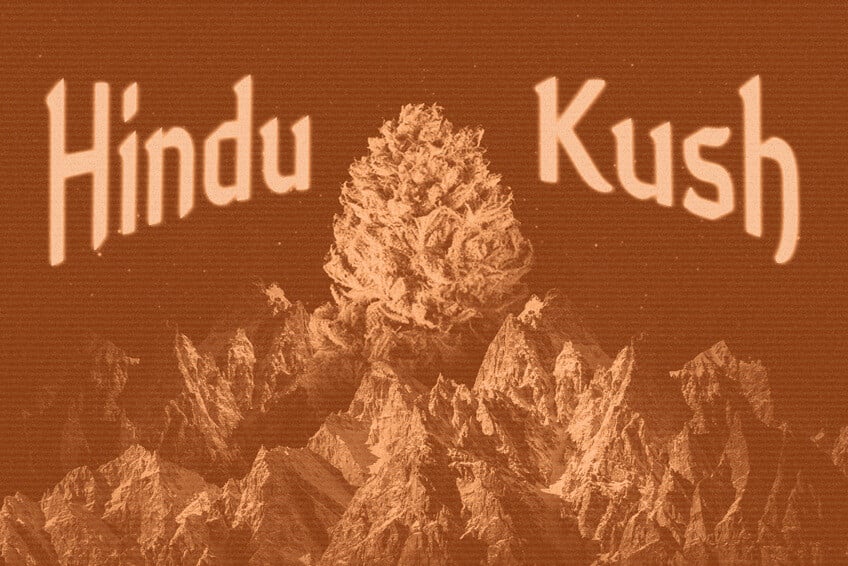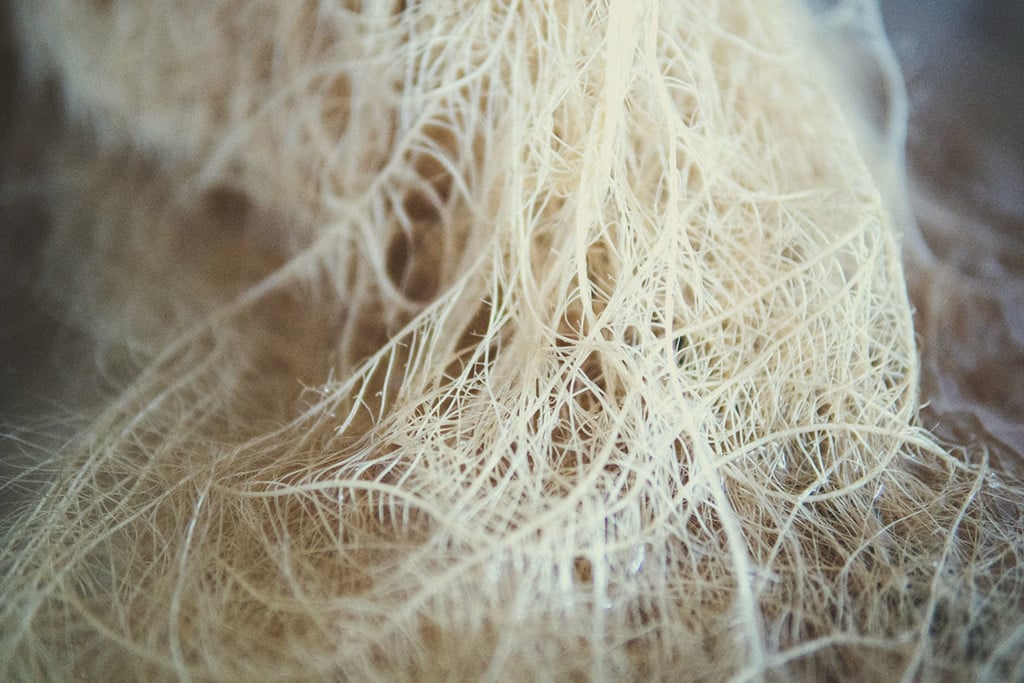.

Is There A Method To The Madness Of Cannabis Strain Names?
Strain names like Bruce Banner, Wedding Cake, and Sunset Sherbet are hard to pass up, but what do they actually tell you about their underlying genetics? Read this guide to find out how the cannabis industry names their new crosses, and whether a fresh approach is needed to improve the customer experience.
Contents:
Even when we know it's mostly hype, weed with attention-grabbing names like Alaskan Thunderfuck, Zombie Killer, or Face Melt is hard to resist. Give it a shiny new Cup, or let a popular grow forum say it's fire, and it's virtually guaranteed to sell out as fast as you can get it.
This isn't anything new. It's been going on since the '70s. Only then, it was Road Kill Skunk and Acapulco Gold.
How do they come up with these names? Do they mean anything? Or are we basically paying more for the same old weed just because it's got a killer name?
Let's take a look at the history of strain names to find out.
IN THE BEGINNING, STRAINS WERE NAMED FOR THEIR HOMELAND
In the early days, cannabis was just cannabis. Then, travellers brought landrace strains from different parts of the world back to breeding meccas like Amsterdam and the American West Coast. These new breeds were named after their country of origin.
Afghan came from Afghanistan, Thai from Thailand, Hindu Kush from the mountain region in Afghanistan and Pakistan, Oaxacan from Mexico, and Lamb's Bread from Jamaica. Apparently, Rastafarians pioneered unusual strain names.
Next, dealers learned that they could sell weed faster and for more money if they gave it an exotic name and claimed it was grown in a tropical locale. That's how strains like Acapulco Gold (a rename of Mexican Sativa) and Panama Red earned their names.
STRAINS NAMED FOR SPECIAL TRAITS
Some early strains were named based on a unique trait. Skunk was the first. A cross of Afghan, Acapulco Gold, and Colombian Gold, it had a sweet, pungent aroma that smelled like someone had just run over a skunk. It was the first stabilised hybrid and was subsequently used to create many others, some with Skunk in the name and many more without it.
Other early strains named for popular features include Cheese (a special Skunk pheno with a more savoury aroma), White Widow (named for a thick coating of snow-white resin) and Blueberry (an Afghan x Thai project that smells like ripe berries).
NAMED CROSSES — BORING BUT ACCURATE
As more hybrids were created, strain names became more like formulas based on the parents’ names. Some breeders couldn't bother to think of an interesting name, so they simply went with Northern Lights x Skunk or Afghan Kush x White Widow.
Others were a little more creative. Blueberry x Cheese became Blue Cheese, Critical x Northern Lights became Critical Lights, and Hawaiian Sativa x White Widow became Hawaiian Snow.
ROCKSTAR BREEDERS AND CRAZY NAMES
Today, anything goes when it comes to strain names. Breeders don't want to reveal too much of what goes into their new crosses because they know if it's a hit, everyone will try to copy it. They also want to stand out from the crowd because competition is stiff.
That's how we get strain names that are almost random. They can be totally made up like Puff Puff Pass Out, named after a celebrity like Obama Kush, or have a convenient tie-in with a famous brand that's not even remotely related to weed like Girl Scout Cookies, Gorilla Glue, or The Original Z.
COPIES, COMPETITION, AND COPYRIGHTS
As selling cannabis seeds turned into big business, piracy turned rampant. As soon as one breeder created a popular strain, the competition rushed to copy them. Or, at least release seeds under the same name. Sometimes they were legitimate; other times, the seed company was selling inferior genetics for a quick profit. However, absolutely everyone claimed theirs was propagated by the original mother or they were gifted a cut.
DJ Short, who created the original Blueberry strain, worked at several seedbanks and carried his genetics with him. On the other hand, three different breeders claimed they created White Widow, all at around the same time, and no one really knows which one is telling the truth.

WHERE DO WE GO FROM HERE?
Catchy names are fun. It's cool to brag about growing Purple Panty Dropper or Budzilla, but most of those names are only good for their entertainment value. They don't really tell you anything. As the global reach of cannabis continues to spread, a more uniform approach is needed so that consumers understand what they are getting.
That's why there's a push for genetic mapping and more transparency when labelling cannabis seeds. If that happens, customers will be able to easily compare the genetic makeup of each seed before they buy. Experts predict that this will reveal many of today's strains to be simple copies of each other, only with different names to make them more marketable or to circumvent copyright violations. Some may even be the exact same strain that's been grown for decades, only with a catchier name and higher price label.
However, it's always important to remember that growing conditions impact final bud quality as much as genetics. Everything from experience to nutrients to lighting to grow medium makes a difference in yield, potency, flavour, and cannabinoid profile. If you want to test this out, split a pack of seeds with a friend then compare your results after harvest. Virtually every time, there will be more than one significant difference.






































